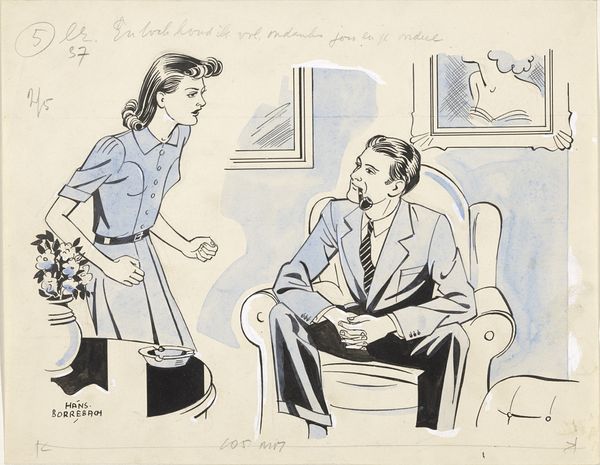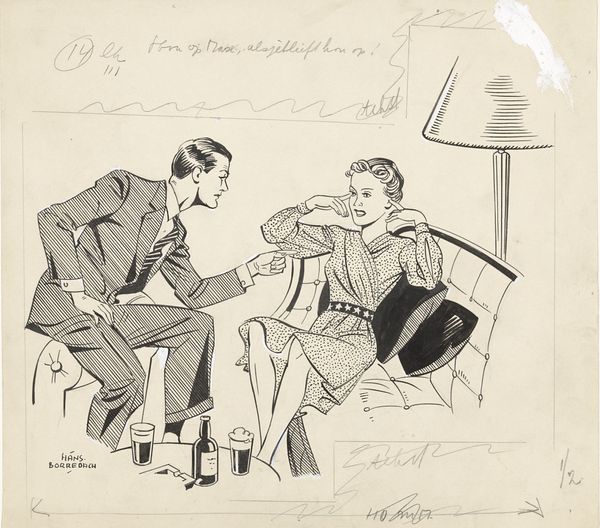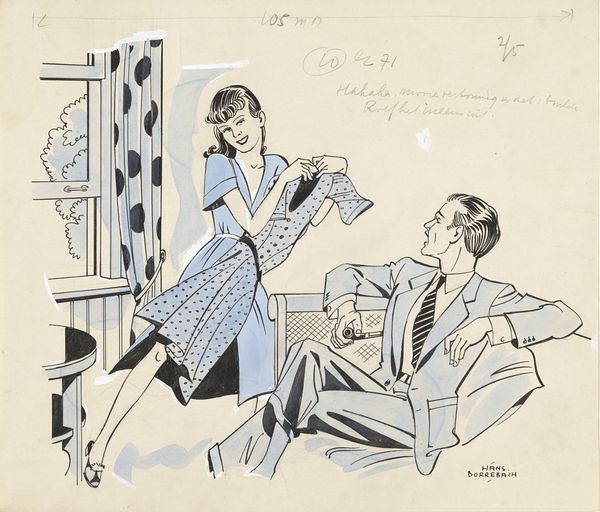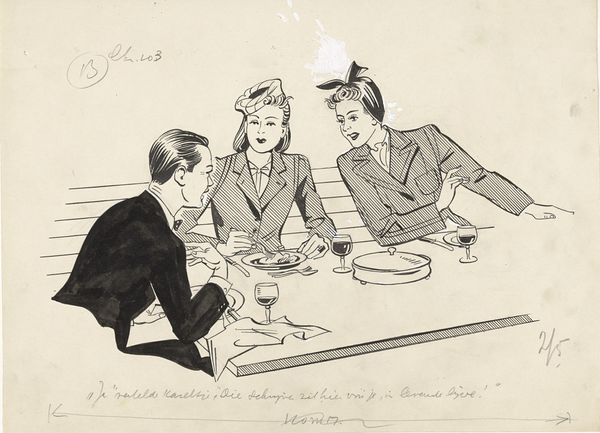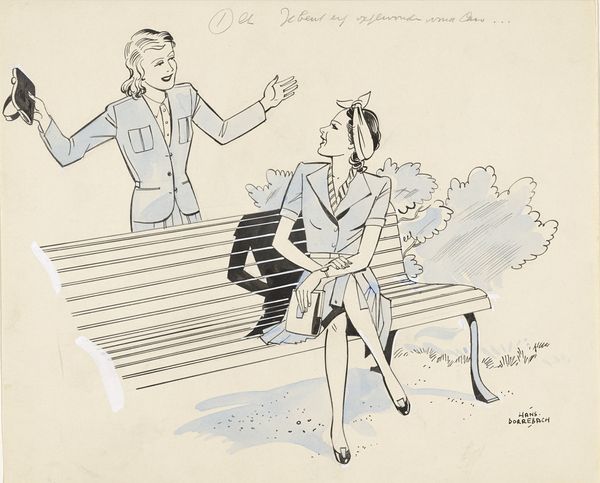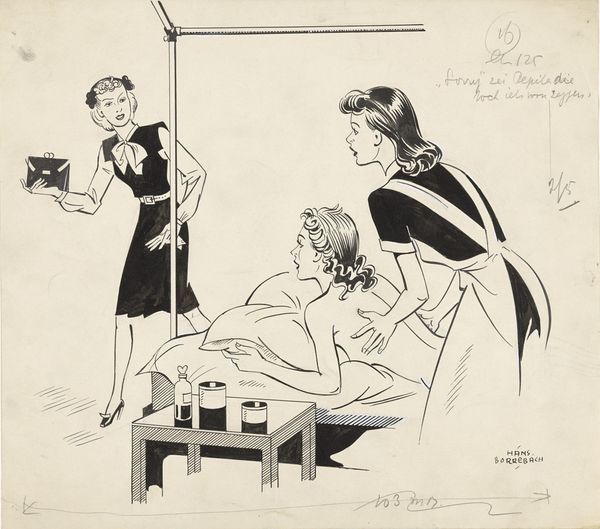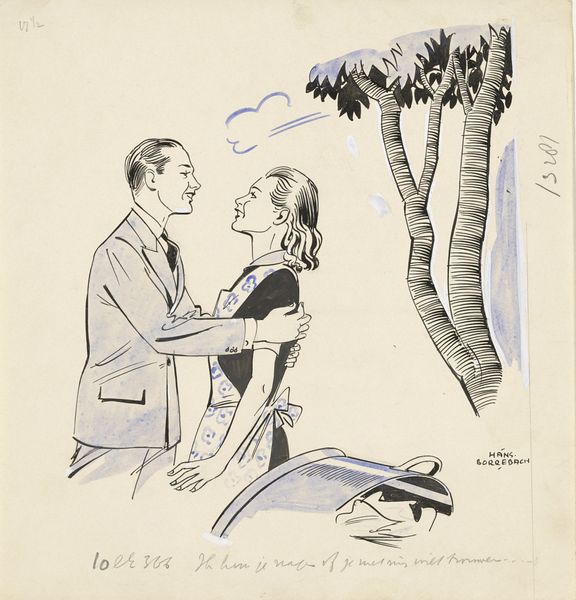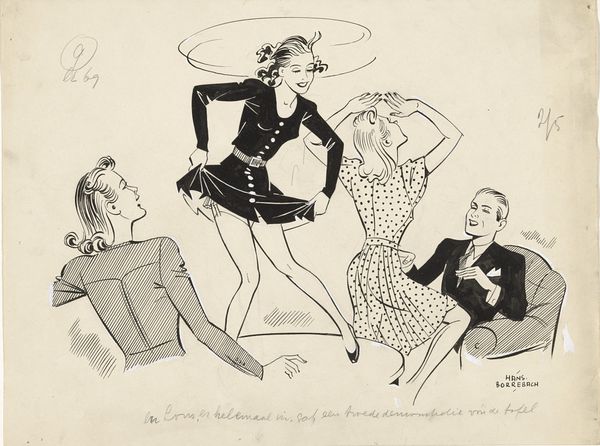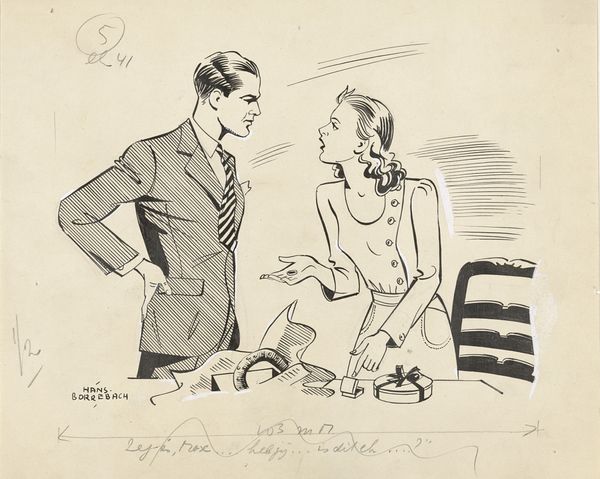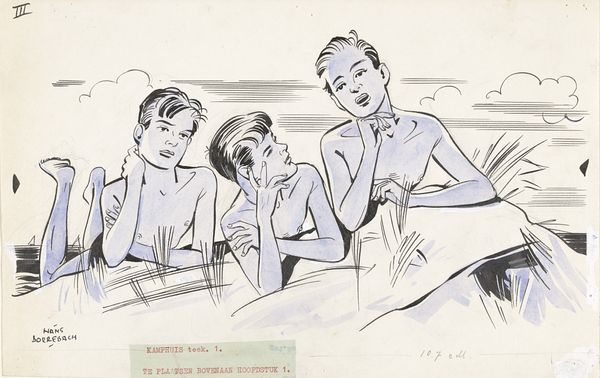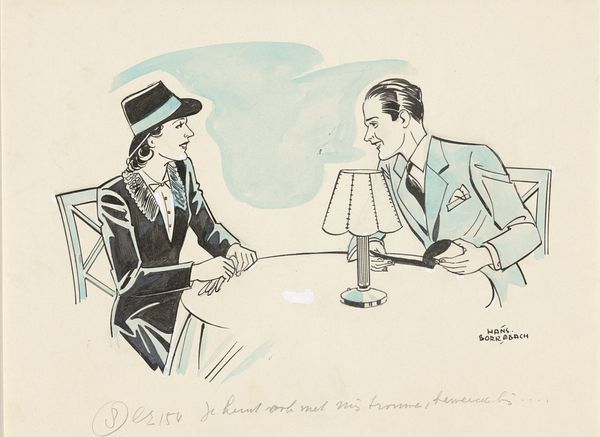
drawing, ink, pen
#
portrait
#
drawing
#
comic strip sketch
#
imaginative character sketch
#
cartoon sketch
#
figuration
#
personal sketchbook
#
ink
#
idea generation sketch
#
ink drawing experimentation
#
pen-ink sketch
#
sketchbook drawing
#
pen
#
genre-painting
#
storyboard and sketchbook work
#
academic-art
#
sketchbook art
Dimensions: height 205 mm, width 292 mm
Copyright: Rijks Museum: Open Domain
Curator: Looking at this ink and pen drawing titled “Lony in gesprek met een jonge man en vrouw”, which translates to "Lony in Conversation with a Young Man and Woman," created by Hans Borrebach before 1954, I'm struck by its clear, deliberate lines and intimate setting. Editor: It's instantly captivating! There’s something about the simplicity of the composition that draws you into this domestic space, almost as if we're eavesdropping on a private conversation. I find the somewhat-restrained palette quite calming. Curator: Indeed, the monochromatic color scheme reinforces the social atmosphere; given that Borrebach produced commercial works, one can argue that these drawings represent more about the lifestyle promoted by consumer culture rather than depicting realities. It captures a moment of poised social interaction. Editor: That's interesting. To me, the poses suggest constructed gender roles, almost bordering on performance. It makes me wonder about the dynamic being portrayed; perhaps the woman facing us has agency, observing with a sly look as the pair with the fancy beverages attempt a show of modern elegance. Curator: The composition certainly evokes that. From a historical point of view, this resonates with how artists portrayed social class during that period. Borrebach, in a way, participated in and solidified visual traditions. But look closely, what's with the text along the margins of the page? Editor: I did notice some possible preliminary annotation—suggestive that the artist’s process entailed using the medium of pen and ink to capture a feeling that is perhaps, ultimately commercial, but rooted in the dynamics of power between three individuals? This invites dialogue. Curator: Certainly, and it serves to demonstrate how popular notions can play into both high art as well as commerce; this sketch captures a slice of life filtered through a distinctly mid-century lens and underscores the interconnected nature of cultural forces. It shows art’s role as social commentator and constructor. Editor: Absolutely. Considering the work through today's lens opens up interesting avenues for reinterpreting its historical, cultural context, bringing past voices into the present conversation on cultural performance and society. Curator: A valuable lesson about historical representation; art rarely stands apart from the cultural moments that influence the choices artists make. Editor: I agree. The sketch offers such clarity; it speaks volumes about a specific time, which has prompted conversations regarding enduring social forces and intersectional identity narratives.
Comments
No comments
Be the first to comment and join the conversation on the ultimate creative platform.
